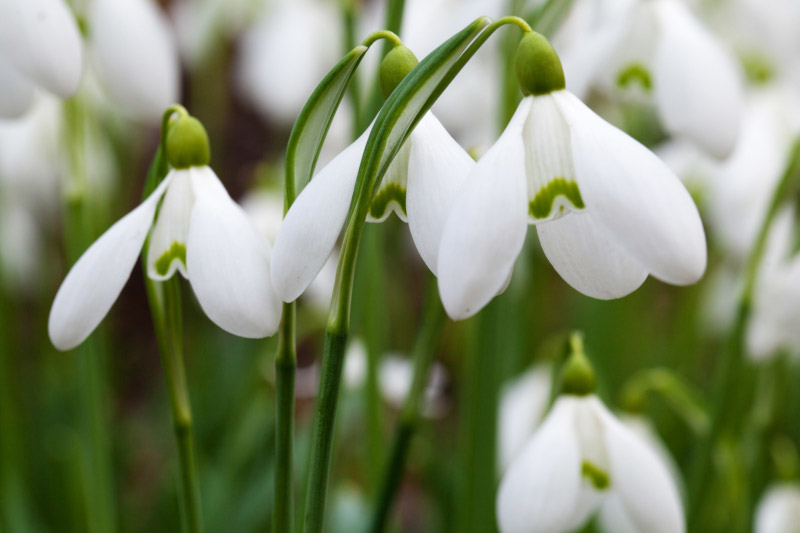Snowdrop Facts
- Most notably, the term Snowdrop serves as the common name for 20 species of small yet lovely flowers within a small genus. Further, each of these wonders of Nature evolved as herbaceous plants. The collective common name derives from a specific trait shared by them all. That’s because every member of the group has the tendency to occasionally flower in the winter.
- However, this tendency naturally depends upon the variability of the local weather. A few types also exist that produce flowers in early Spring or late Autumn. Quite unfortunately, several species also now face the threat of extinction. In the cases of these species, collecting Snowdrop flowers in the wild remains forbidden by law in many countries within their range.
- In accordance with CITES regulations, it now constitutes a crime to engage in the international trade of most Snowdrop varieties. This applies to bulbs, live plants, and even dead ones. Among those species facing extinction, the IUCN has listings for 6 of them. One lists as Near Threatened, 4 list as Vulnerable, and one lists as Critically Endangered, on the Red List.
Related Articles
Snowdrop Physical Description
Since so many forms of Snowdrop exist, physical variations naturally occur among them. However, many traits remain consistent throughout the group. For one, most members of this genus develop as comparatively diminutive plants. That’s because typical varieties attain a height of around 6 in (15 cm). Two of the known species, however, attain heights ranging from 9-12 in (23.5-30 cm).
All varieties of Snowdrop grow from bulbs, and each of these bulbs produces only a single stalk. Each stalk typically includes 2-3 long, tapering leaves. Each stalk also produces a single flower that appears bell-shaped and white in color. The flower has six tepals, instead of petals. The outer three typically grow larger than the inner three. The seeds appear whitish in color, and typically get spread by ants.
- Kingdom: Plantae
- Phylum: Tracheophytes
- Class: Angiosperms
- Order: Asparagales
- Family: Amaryllidaceae
- Genus: Galanthus
Snowdrop Distribution, Habitat, and Ecology
All of the known variations of Snowdrop evolved as native to a comparatively broad swathe of the world. That’s because the genus developed in parts of Europe and the Middle East. This native range extends from Spain, France, and Germany to Iran. The plant has, however, also become naturalized in other portions of Europe. It has also become naturalized in portions of Canada and the United States.
However, even within this relatively large territorial range, the different members of the genus also have very specific habitat requirements. That’s due to the fact that, in its native range, it generally appears in woodlands. Furthermore, even there, it most commonly grows in regions of alkaline or acid soil. Nevertheless, some species grow in either grasslands or mountainous areas.
Quite sadly, though, one species of Snowdrop in particular faces grave peril. That’s because this particular species currently inhabits only 5 locations. Additionally, each of these boasts only a few specimens. The total area of its habitation only equals roughly 7.7 sq mi (20 sq km). Previously, a sixth group existed. Astoundingly, the Chinese government destroyed it in preparation for the 2012 Olympics.
Species Sharing Its Range
Check out our other articles on 5 Sublime North American Trees, Black Rain Frog, Mount Erebus, Jackfruit Tree, Japanese Hare, Basking Shark, Southern Flannel Moth, Common European Viper

